Madlener House
4 West Burton Place
Chicago, Illinois 60610
Telephone: 312.787.4071
[email protected]
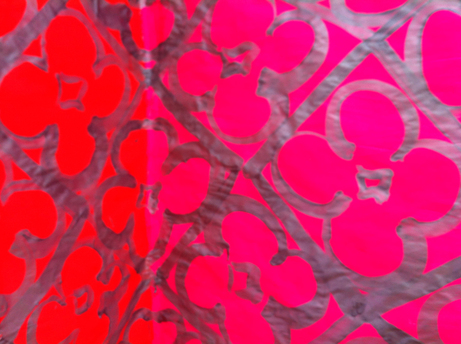
Judy Ledgerwood, preparatory studies for 'Chromatic Patterns for the Graham Foundation,' 2013
Please join us for a reception to celebrate the opening of Judy Ledgerwood: Chromatic Patterns for the Graham Foundation.
For more information on the exhibition, Chromatic Patterns for the Graham Foundation, click here.
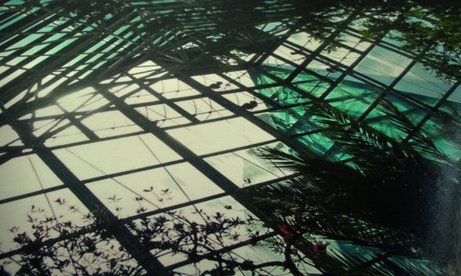
In his first Chicago performance since 2011, Chris Madak will present new algorithmic and systems-based pieces for synthesizer, computer, and solo improviser.
Chris Madak (b. 1983, Massilon, Ohio) is a musician and electroacoustic composer active in Cleveland and Philadelphia and best known for his work as Bee Mask. Based in private systems and oblique strategies, Madak’s work endeavors to preserve and extend the countercultural heritage of experimental music. Madak draws on a varied technical vocabulary within experimental music, including handmade electronics and percussion, analog synthesis, concrète manipulations on tape and samplers, prepared guitar and piano, and digital signal processing. Rooted in rituals of listening and the convivial experience of phonographic sound in space from hi-fi’s to sound systems, Madak is motivated by an idea of music as studio art—distinct from what he believes are the arid textual formulas of sound art. He approaches performance as an opening of the experimental space of the studio onto the world. Madak has released several LPs on the Spectrum Spools imprint of Editions Mego and has published editions of his and others' work through his own Deception Island (2005-2011) and Pear Growers Series (2013-present) labels. He has performed throughout North America, Australia, Europe, and Japan, and collaborated with artists including Donato Dozzy, Surgeon, Charles Cohen, Outer Space, Autre Ne Veut, Laraaji, and Oneohtrix Point Never.
This performance is presented in partnership with Lampo. Founded in 1997, Lampo is a non-profit organization for experimental music, sound art, and intermedia projects. Visit lampo.org.

View of “Judy Ledgerwood: Chromatic Patterns for the Graham Foundation,” 2014, Graham Foundation, Chicago. Photo Tom Van Eynde.
On February 6, 2014, Judy Ledgerwood will discuss her practice and her current installation, Chromatic Patterns for the Graham Foundation, on view through April 5, 2014.
Judy Ledgerwood is a Chicago-based painter and educator. She is the recipient of numerous awards including The Richard H. Driehaus Foundation Award, an Artadia Award, a Tiffany Award in the Visual Arts, a National Endowment for the Arts Award, and an Illinois Art Council Award. Her work is represented in public collections including the Art Institute of Chicago, the Metropolitan Museum of Art, the Museum of Contemporary Art Los Angeles, the Milwaukee Museum of Art, the Museum of Contemporary Art Chicago, and the Kunstmuseum St. Gallen Switzerland. She received a BFA from the Art Academy of Cincinnati and a MFA the School of the Art Institute of Chicago. Ledgerwood is Director of Graduate Studies and Professor of Art Theory and Practice at Northwestern University.
For more information on the exhibition, Chromatic Patterns for the Graham Foundation, click here.

In a new lecture titled “Giving Shape,” Graham grantee Zak Kyes explores historical references that inform his studio’s approach to publications, exhibitions and identities including Lina Bo Bardi, Seth Siegelaub, CalArts and the Visual Design Association, while also showing the studio’s recent and ongoing projects with the Architectural Association, Haus der Kulturen der Welt, 2012 Taipei Biennial, Lisbon Architecture Triennale, Fridericianum, and 8th Berlin Biennale. Zak Group uses the strengths and skills that come from graphic design to consider how designers can thoughtfully take part in the creative process where giving shape is its own way of creating culture.
First presented November 2013 at Centre Pompidou, Paris
Zak Kyes is a Swiss-American graphic designer and founder and director of the design studio Zak Group. Since 2006 Kyes has been the art director of the Architectural Association, London. In 2008, he co-founded Bedford Press, an imprint of AA Publications. Apart from studio projects, Kyes's critical practice encompasses publishing, curating, and site-specific projects. His current projects include the art direction of the 8th edition of the Berlin Biennale (2014). Kyes also teaches at the Architectural Association School of Architecture, London, and at ECAL (Ecole Cantonale d'Art de Lausanne).
Zak Group is a London-based design studio headed by Zak Kyes and Grégory Ambos. The office was formed in 2005 as a collaborative practice to explore the possibilities for design in the production of culture. The studio received the Inform Award for Conceptual Design in 2011 and was twice awarded the prize for the Most Beautiful Swiss Book in 2010. The studio's work has been included in the exhibitions Graphic Design Worlds (Triennale Design Museum, Milan, 2011), Wide White Space (CCA Wattis, San Francisco, 2011), The Malady of Writing (MACBA, Barcelona, 2009), Graphic Design for and Against Cities (Corner College, Zurich, 2009), and the 22nd International Biennale of Graphic Design (Brno, 2009).
Image: Brotherton—Lock, 2013. Courtesy Zak Group.
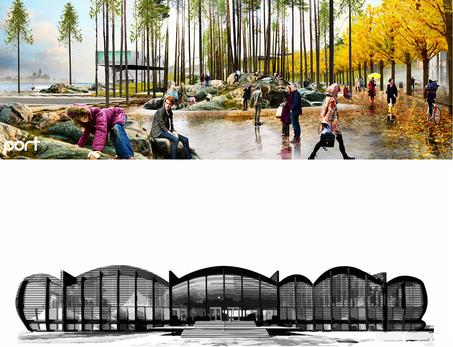
The Chicago Architectural Club, in partnership with the Graham Foundation and AIA Chicago, is pleased to announce the winners of the 2014 Emerging Visions competition:
CHRISTOPHER MARCINKOSKI & ANDREW MODDRELL
PORT Architecture + Urbanism
and
GRANT GIBSON
CAMES/gibson
Please join us tomorrow, March 13, 2014, to celebrate the results of the 2014 competition with special presentations by this year's winners followed by a roundtable discussion with the jury.
This year's jury includes Emerging Visions alumni Michael Wilkinson, Sarah Dunn (UrbanLab), Tristan d'Estree Sterk (ORAMBRA), Karla Sierralta & Brian Strawn (Strawn.Sierralta), and Iker Gil (Mas Studio), as well as AIA Chicago executive vice-president Zurich Esposito, Graham Foundation director Sarah Herda, and prize founders Elva Rubio and Dan Wheeler.
Founded in 1998, the Emerging Visions competition recognizes significant architectural endeavors by promising young architects and designers based in Chicago.
Images: (Top) Christopher Marcinkoski and Andrew Moddrell (PORT Architecture + Urbanism); (Bottom) Grant Gibson, (CAMES/gibson)
Chicago Architectural Club
http://chicagoarchitecturalclub.org/
AIA Chicago
https://www.aiachicago.org/
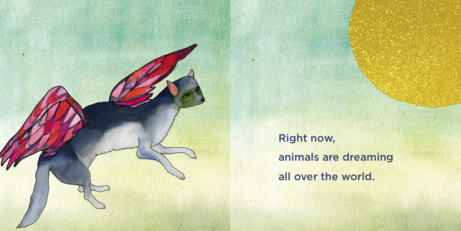
To celebrate the launch of the new Artists’ Board Book series, published by Graham grantee Soberscove Press, the Graham Foundation Bookshop will be hosting a special event for children inside Judy Ledgerwood’s immersive installation, Chromatic Patterns for the Graham Foundation. This innovative series consists of 5 individually-authored books that playfully combine the conventions of the artist’s book with those of children’s board books. On March 15, 2014, children of all ages are invited to create their own board books, finding inspiration in the pattern, color, and ornament of Ledgerwood’s vibrant wall painting and the Foundation’s historic Prairie-style Madlener House. Co-sponsored by Poetry magazine, the launch event will also include an artist-led activity by Jessie Mott, author of Animals Dreaming.
Soberscove's Artists' Board Books are sold individually, as well as in a Limited Edition Boxed Set. Titles include:
Animals Dreaming by Jessie Mott
Dunes at Noons by Brad Tucker
Food Face by Carrie Solomon
Mountain Ocean Sun by David Brainard
A Sunny Day for Flowers by Zehra Khan and Tim Winn
Soberscove Press seeks to make available art-related materials that fill a gap in the literature, are difficult to access, or are created in collaboration with artists. Our publications are intended for a general readership that thrives on intellectual curiosity and visual pleasure.
Jessie Mott is a Chicago-based visual artist and writer whose work employs a menagerie of human, animal, and celestial forms. Mott’s work has been included in many solo and group exhibitions. Her collaborative animations with the artist and writer Steve Reinke have been screened nationally and internationally, and will be presented in the upcoming 2014 Whitney Biennial. Mott received a MFA from Northwestern University and a BFA from New York University.
Founded in Chicago by Harriet Monroe in 1912, POETRY is the oldest monthly devoted to verse in the English-speaking world. Harriet Monroe’s “Open Door” policy, set forth in volume 1 of the magazine, remains the most succinct statement of POETRY’s mission: to print the best poetry written today, in whatever style, genre, or approach. The magazine established its reputation early by publishing the first important poems of T.S. Eliot, Ezra Pound, Marianne Moore, Wallace Stevens, H.D., William Carlos Williams, Carl Sandburg, and other now-classic authors. In succeeding decades it has presented—often for the first time—works by virtually every significant poet of the twentieth century.
Image: from Animals Dreaming by Jessie Mott
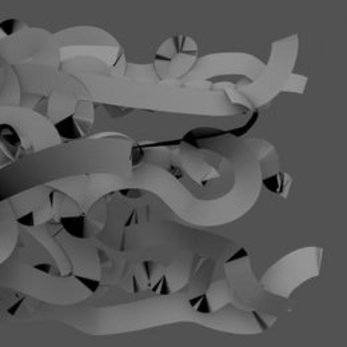
Marcus Schmickler, 'Palace of Marvels [queered pitch]' (editionsMego)
German composer and electronic musician Marcus Schmickler returns to the Graham Foundation on March 15, 2014, for a performance that will explore the correlation between music, language, thought, and representation. Schmickler will present “Semiotic Chora,” a new work that uses sonifications of logical functions and electro-acoustic artifacts.
Marcus Schmickler (b. 1968, Cologne, Germany) studied composition and electronic music and works in both composed and improvised forms. He has won numerous prizes and honors and is closely associated with the Cologne label a-Musik. As a composer, he has worked with the ensemble recherche, the Staatskapelle Weimar, the musikFabrik, the Paragon Ensemble, the Ensemble Zeitkratzer, among others. As a musician, he has performed with artists such as John Tilbury, Thomas Lehn, MIMEO and Julee Cruise. Schmickler lives and works in Cologne.
This performance is presented in partnership with Lampo and with the support from the Goethe-Institut Chicago. Founded in 1997, Lampo is a non-profit organization for experimental music, sound art, and intermedia projects. Visit lampo.org.
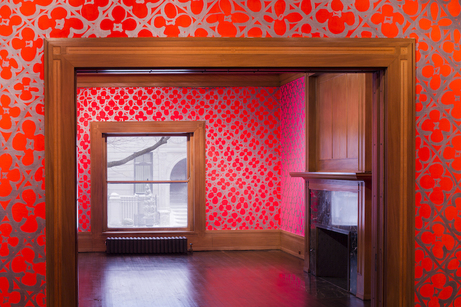
Poet and critic John Yau will discuss the work of Chicago-based painter Judy Ledgerwood in conjunction with the current exhibition Chromatic Patterns for the Graham Foundation.
Interested in the interplay between the visual and linguistic, Yau has explored questions of representation and identity throughout his essays, poetry, and art criticism, attending particularly to the question of the materiality of language and painting. Writing about Judy Ledgerwood’s paintings in 2011, Yau states:
When I was looking at the painting “Spiritualized” (2011), which is brown- violet, magenta, and gold, I was initially reminded of a lavish, oversized box of Godiva chocolates and of church vestments, before other associations began to surface, mostly having to do with the erotic. Such links are as abundant as these paintings are optically and viscerally sumptuous. A carefully considered synthesis of opulence and structure, excess and restraint, is at the heart of Ledgerwood’s work as well as a starting point for speculation.
On April 5, Yau will continue his speculation into Ledgerwood’s work, asking how Ledgerwood’s recent installation for the Graham Foundation asks new questions of the limitations and possibilities of painting as it intersects with and aspires to the conditions of architecture.
John Yau is an American poet, critic, and curator who lives in New York City. He received his B.A. from Bard College and his M.F.A. from Brooklyn College. Yau has published many books of poetry, artists' books, fiction, and art criticism, including Corpse and Mirror (Holt Rinehart, 1983), A Thing Among Things: The Art of Jasper Johns (D.A.P., 2008), Borrowed Love Poems (Penguin, 2002), The Passionate Spectator: Essays on Art and Poetry (University of Michigan Press, 2006), and most recently Further Adventures in Monochrome (Copper Canyon Press, 2012). His reviews have appeared in Artforum, Art in America, Art News, Bookforum, New York Times Book Review and the Los Angeles Times. He was the Arts Editor for the Brooklyn Rail (2006-2011), and in January 2012, he started the online magazine, Hyperallergic Weekend, with three other writers. Yau has received numerous awards including the Lavan Award from the Academy of American Poets, the American Poetry Review Jerome Shestack Award, a New York Foundation for the Arts Award and John Simon Guggenheim Memorial Fellowship.
Image: View of “Judy Ledgerwood: Chromatic Patterns for the Graham Foundation,” 2014, Graham Foundation, Chicago. Photo Thomas Rossiter.
For more information on the exhibition, Chromatic Patterns for the Graham Foundation, click here.
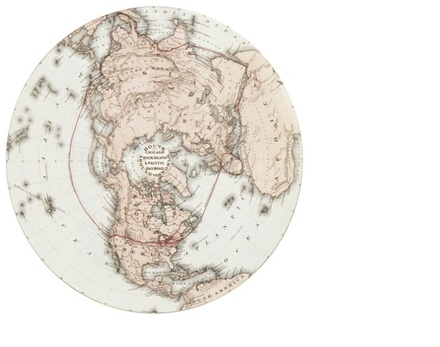
This event brings together the editors and several contributors to the Graham-funded book Chicagoisms: The City as Catalyst for Architectural Speculation, which interrogates Chicago’s history of fomenting and transmitting radical architectural and urban visions. Editor Alexander Eisenschmidt will introduce the project and short presentations by Penelope Dean, Ellen Grimes, Sam Jacob, and Mark Linder, which will be followed by a discussion, moderated by editor Jonathan Mekinda. The event will highlight some of the most productive episodes in the city’s past and explore what made Chicago function so effectively as a mediator of ideas and an instigator of speculation. The book launch also marks the opening of the exhibition “Chicagoisms” at the Art Institute of Chicago. Building on the premise of the book, this exhibition mines the history of the city to define principles of architectural action and urban engagement to which architecture practices were invited to respond via speculative proposals for the contemporary city.
Copies of Chicagoisms: The City as Catalyst for Architectural Speculation will be available for purchase at the Graham Foundation Bookshop.
This event is co-sponsored by the Architecture & Design Society at the Art Institute of Chicago.
Alexander Eisenschmidt is a designer, theorist, and Assistant Professor of Architecture at the University of Illinois at Chicago. His work investigates the productive tension between the modern city and architectural form – a topic on which he has published and lectured extensively. Eisenschmidt is the editor of City Catalyst (AD, 2012), curator of City Works for the 13th International Architecture Biennale in Venice, and founding partner of Studio Offshore.
Jonathan Mekinda is an Assistant Professor at the University of Illinois at Chicago with a joint appointment in the Department of Art History and the School of Design. His research focuses on the history of modern architecture and design during the middle decades of the twentieth century, particularly in Italy, which is the subject of his current book project, Building the House of Man. His writing can be found in journals such as the Journal of Design History and Design Issues and in the forthcoming volume Revival: Memories, Identities, Utopias (Courtauld Books Online, 2015).
Penelope Dean is Associate Professor of Architecture at the University of Illinois at Chicago. Her writings have appeared in Architectural Design, Harvard Design Magazine, hunch, Log, Praxis, and TransScape. Her research has been supported by grants from the Graham Foundation for Advanced Studies in the Fine Arts and a Visiting Scholars Residency at the Canadian Centre for Architecture at Montreal. She is founding editor of the architectural magazine Flat Out.
Ellen D. Grimes is an Associate Professor at the School of the Art Institute of Chicago, where she teaches architectural design, technology, and theory. Previously she has taught at the University of Illinois at Chicago and the Illinois Institute of Technology, and served as the executive editor of the Journal of Architectural Education.
Sam Jacob is an architect and critic. He was co-founder of FAT, where he was responsible for a range of internationally acclaimed projects, and now directs his own architecture and design studio. He is Director of Night School at the Architectural Association in London and teaches at the University of Illinois at Chicago. He is also a columnist for Dezeen and Art Review and contributing editor to Icon. Currently, he is co-curating the British Pavilion at the 2014 Venice Biennale.
Mark Linder is Associate Professor in architecture and Chancellor’s Fellow in the Humanities at Syracuse University. He is the author of Nothing Less than Literal: Architecture after Minimalism (MIT Press, 2004) and is currently at work on a book titled Three Easy Mieses: That’s Brutal, What’s Modern? on the alternative mid-century modernisms of Alison and Peter Smithson, Walter Segal, and John Hejduk.
Image: "Route Via Chicago Rock Island & Pacific Railroad Around the World," 1870. The map celebrates Chicago's status as a metropolis simultaneously distant from and intimately connected to the rest of the world.
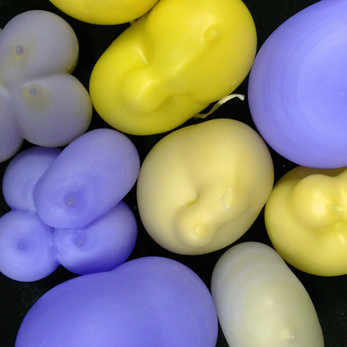
Molly Hunker, inaugural Douglas A. Garofalo Fellow at the School of Architecture at University of Illinois at Chicago, joins the Graham Foundation April 7 for a presentation on her current research and culminating fellowship project, Myth.
Hunker’s fellowship research has centered on kitsch artifacts and their potential to recalibrate contemporary notions of atmosphere and engagement. Myth, opening at UIC School of Architecture April 1, focuses specifically on the home shrine, re-envisioning the richly decorative and kitsch accretion through the lens of the architectural installation. The discussion will explore how home shrines and related assemblies can provoke new understandings of visual opulence and lead to the production of emotionally resonant architecture.
Molly Hunker grew up in Wyoming and earned a Bachelor of Arts degree from Dartmouth College and Master of Architecture degree from the University of California, Los Angeles (UCLA). Hunker has worked for architecture studios and art workshops in Seattle and Los Angeles and has taught at UCLA, Woodbury University and University of Illinois at Chicago. She is the co-founder, with Greg Corso, of SPORTS, a design collaborative that aims to reconcile the intelligence and sensibilities dormant in the crafty, cute and commonplace with that of the high-tech, couture, and complex to distill the opportunities born at this intersection.
Image: Molly Hunker, "Myth" Candles.
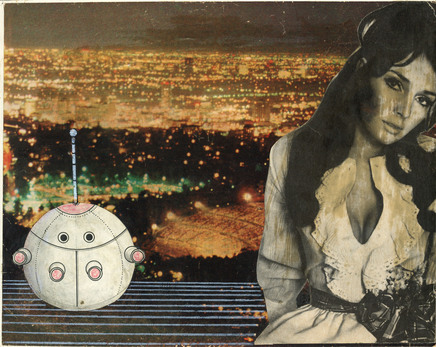
Please joins us to celebrate the opening of Everything Loose Will Land, with remarks by curator Sylvia Lavin.
6PM Remarks by curator Sylvia Lavin
6:30-8:30PM Opening Reception
Sylvia Lavin is a leading figure in contemporary architectural history, theory, and criticism. Lavin is the recipient of a 2011 Arts and Letters Award, as well as previous awards from the Getty Center, the Kress Foundation, and the Social Science Research Council. In addition to her most recent book, Kissing Architecture (Princeton University Press, 2011) Lavin is the author of Quatremere de Quincy and the Invention of a Modern Language of Architecture (MIT Press, 1992); Form Follows Libido: Architecture and Richard Neutra in a Psychoanalytic Culture (MIT Press, 2005); and the forthcoming The Flash in the Pan and Other Forms of Architectural Contemporaneity (recipient of a Graham Foundation grant). She initiated a series of architectural projects for the Hammer Museum, and has been a guest curator for the Canadian Center for Architecture, Montreal, and Ace Galleries.
Image: Ron Herron (Archigram), Manzak in Griffith Park, 1969. Collage, 7 1/2 x 9 1/2 inches. Copyright Ron Herron (Archigram). Courtesy of Simon Herron.
For more information on the exhibition, Everything Loose Will Land, click here.
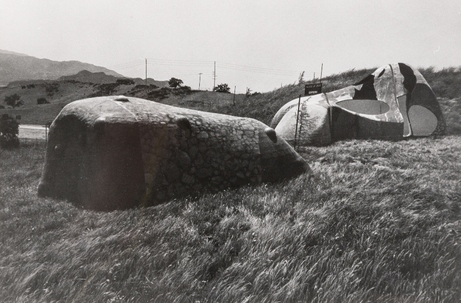
Founding Fluxus member Alison Knowles will read selected works, including sections from her seminal piece House of Dust (1968-71). One of the first computer-generated poems, House of Dust evolved into an abstract environmental sculpture built out of five thousands pounds of concrete and fiberglass. Initially installed in New York, the structure was later moved to Los Angeles in 1971. To inaugurate the installation, Knowles and poet Normal Kaplan organized a “visual, physical poetry experience” where a helicopter dropped a one-thousand-foot-long printout of the poem onto the structure. With its multiple iterations in New York and Los Angeles, the House of Dust became a piece of serial architecture generated rather than designed by a set of procedures and heuristic constraints.
House of Dust is currently on view in the Graham Foundation's exhibition Everything Loose Will Land.
Alison Knowles is a visual artist known for her sound works, installations, performances, and publications. A founding member of the experimental avant-garde group Fluxus, Alison Knowles continues to create work that incorporates performance, radio and sound, papermaking, and printmaking. Knowles has exhibited her work at numerous institutions, including the Museum of Modern Art and the Tate Modern, and has received multiple awards and fellowships, including a Guggenheim Fellowship (1968) and a Documenta Professorship at the Kunstakaedmie Kassel (1996-7).
Image: Alison Knowles, House of Dust, 1971. Photograph, 10 ½ x 8 ½ inches. Copyright Alison Knowles. Courtesy of the California Institute of the Arts, Institute Archive. Photo Joshua White.
For more information on the exhibition, Everything Loose Will Land, click here.
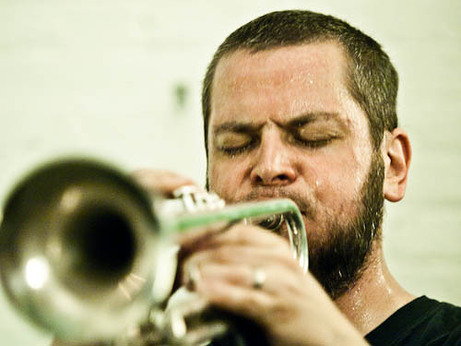
Recognized as one of the leading improvisers working to expand the limits and expectations of contemporary trumpet, Nate Wooley comes to the Graham Foundation to perform a new electro-acoustic work, "For Kenneth Gaburo," as well as solo amplified trumpet improvisations.
In his new project “For Kenneth Gaburo,” Wooley continues to explore the concept of combinatory sound, now using linguistics as an oral-mechanical source for affecting the acoustic sound of the trumpet. Wooley’s new piece takes texts by composer Kenneth Gaburo and combines synthesized tones on tape with manipulated trumpet techniques “to create shadings of the phonetic sounds inherent in the text.” The composition pays homage to two of Gaburo's masterpieces, "Maledetto" and "Mouthpiece II for Trumpet Sextet."
Nate Wooley (b. 1974) was born in Clatskanie, Oregon, a town of 2,000 people in the timber country of the Pacific Northwest. He began playing trumpet professionally with his father, a big band saxophonist, at the age of thirteen. Since moving to New York in 2001, he has become a leading trumpet player in the burgeoning Brooklyn jazz, improv, noise, and new music scenes. He has performed regularly with John Zorn, Anthony Braxton, Eliane Radigue, Ken Vandermark, Fred Frith, Evan Parker and Yoshi Wada, and collaborated with Chris Corsano, C. Spencer Yeh, Peter Evans, and Mary Halvorson. Wooley’s combination of vocalization, extreme extended technique, noise and drone aesthetics, amplification and feedback, and compositional rigor has led one reviewer to call his solo recordings "exquisitely hostile."
This performance is presented in partnership with Lampo. Founded in 1997, Lampo is a non-profit organization for experimental music, sound art, and intermedia projects. Visit www.lampo.org.
Image: Photo Peter Gannushkin.
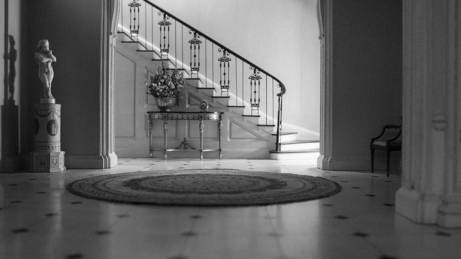
Please join us for a special screening of The European Rooms, a short film by media artist David K. Ross that presents intimate views of Enlightenment-era architectural interiors featured in the Art Institute of Chicago’s Thorne Rooms. In Ross’s newest work, an unhurried camera glides across drawing rooms, bedrooms, dining rooms, and entrance halls filled with finely crafted furniture and carefully selected objets. Though well-appointed, this "sealed and stifling" world of privilege, class, and prestige is also inescapably uncanny and oneiric. A slow unraveling of cinematic, sonic and architectural space played out in real time, The European Rooms is as confounding as it is elucidatory.
David K. Ross works in a variety of media including film, video, photography and installation, and is based in Chicago and Montreal. His formal training as an architect and his experimentation with large format photography and film have resulted in a wide range of projects investigating the history of optical technologies and geodetic practices, museum taxonomies and transport systems, self-storage facilities, and urban infrastructures. Ross's work has been exhibited in major institutions in North America and Europe, and are included in private and public collections including the National Gallery of Canada, the Musée d'art contemporain de Montréal and the Canadian Centre for Architecture. His films and videos have been shown at CineMarfa (2012), Le Mois de la Photo à Montréal (2013), and the Festival Internacional de Cine en Guadalajara (2014).
Image: David K. Ross, The European Rooms, 2014. Production still, HD video, 27:30. Courtesy David K. Ross.
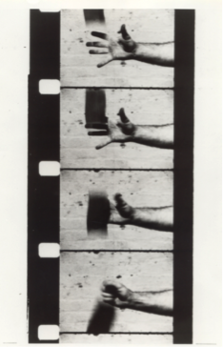
© Richard Serra. Courtesy ARS, NY and DACS, London, 2015 and Gagosian Gallery
The Graham Foundation and the Goethe-Institut Chicago are pleased to present a rare screening of films by German filmmaker and television art pioneer Gerry Schum. From 1968 to 1970, Gerry Schum broadcasted original artist films through German public television. This radical model bypassed traditional institutions with the direct dispersal of artwork into the domestic space. International in scope, Schum’s productions featured work by Joseph Beuys, Alighiero Boetti, Jan Dibbets, Richard Long, Mario Merz, Richard Serra, Robert Smithson, among others. Albeit brief, Schum’s project introduced a new framework for viewing earthworks and conceptual and performance art in the context of everyday life.
On June 11, 2014, Gerry Schum’s television productions return to the domestic space with a rare screening at the Graham Foundation’s historic Madlener House. The program includes Fernsehgalerie's two television exhibitions, Land Art (1969) and Identifications (1970), along with Dies alles Herzchen wird einmal dir gehören (All This Darling Will Once Belong To You) (1967) and Konsumkunst - Kunstkonsum (1968)—two early documentary works Schum produced for Hessischer Rundfunk, Hesse and Westdeutscher Rundfunk, Cologne. The first occasion to screen all four works together in Chicago, the event sheds light on this lesser-known collaboration between European and American artists between 1967-1970. The screenings will be introduced by curator Robyn Farrell.
FILMS:
Gerry Schum, Land Art - Fernsehausstellung I, Fernsehgalerie Berlin, 1969, DVD transfer, 32:00. Richard Long, Barry Flanagan, Dennis Oppenheim, Robert Smithson, Marinus Boezem, Jan Dibbets, Walter de Maria. Courtesy Groninger Museum, Groningen, Netherlands.
Gerry Schum, Identifications - Fernsehausstellung II, Fernsehgalerie Berlin, 1970, Video. 36:00. Joseph Beuys, Reiner Ruthenbeck, Klaus Reinke, Ulrich Rückriem, Daniel Buren, Hamish Fulton, Gilbert & George, Stanley Brouwn, Ger van Elk, Giovanni Anselmo, Alighiero Boetti, Pier Paolo Calzolari, Gino de Dominicis, Mario Merz, Gilberto Zorio, Gary Kuehn, Keith Sonnier, Richard Serra, Franz Erhard Walther, Lawrence Weiner. Courtesy LIMA, Amsterdam, Netherlands.
Gerry Schum, Dies alles Herzchen wird einmal dir gehören (All This Darling Will Once Belong To You), Hessischer Rundfunk, Hesse, 1967. DVD transfer 6:55 min. Performance organized by Paul Maenz and Peter Roehr, Galerie Dorothea Loehr. September 9,1967, Frankfurt am Main, recorded by Gerry Schum.
Gerry Schum, Konsumkunst - Kunstkonsum, Westdeutscher Rundfunk, Cologne, 1968, DVD transfer from 16mm, 29:32.
This event is made possible with the generous support of the Goethe-Institut Chicago.
Gerry Schum (b. Cologne 1938-1973) was educated in television and film production at the Deutches Institut fer und Fersehen in Munich, and at Fernsehakademie from 1961-1968. He began work as a cameraman and filmmaker for television broadcast stations in Berlin around 1966, completing a series of documentary collaborations for television broadcast: Schaustücke—Ereignisse (Showpieces—Events, 1967); 6. Kunst-Biennale San Marino (1967); and Konsumkunst-Kunstkosum (Consumption-Art, Art-Consumption, 1968). Together with Ursula Wevers, he initiated Fernsehgalerie Gerry Schum, 1968-1970 and Videogalerie Schum, 1971-1973. Over the course of five years Schum worked as producer and cameraman to broadcast and distribute artist films and videos by John Baldessari, Joseph Beuys, Jan Dibbets, Gilbert & George, Michael Heizer, Mario Merz, Bruce Nauman, Ulrich Rückriem, Richard Serra, Keith Sonnier, Ger van Elk, Lawrence Weiner, among others. In 1972 Schum was commissioned to present video art sections at Document 5 and the Venice Biennale. Before his death in 1973 Schum accepted the position of curator for the first video art studio at the Folkwang Museum in Essen, Germany.
Robyn Farrell is a Chicago-based writer and curator whose work explores the intersection of contemporary art, technology, and time-based media, and early European video collectives c. 1970. Farrell has written and organized programming for INTUIT: The Center for Intuitive and Outsider Art, the DePaul Art Museum, and Conversations at the Edge at the Gene Siskel Film Center, among others. She is currently Curatorial Assistant in the Department of Contemporary Art at the Art Institute of Chicago.
The Goethe-Institut is the cultural institute of the Federal Republic of Germany. Global in reach, the Goethe-Institut aims to promote knowledge of the German language abroad, foster international cultural cooperation, and convey a comprehensive picture of Germany by providing information on Germany's cultural, social and political life. For more information, visit www.goethe.de.
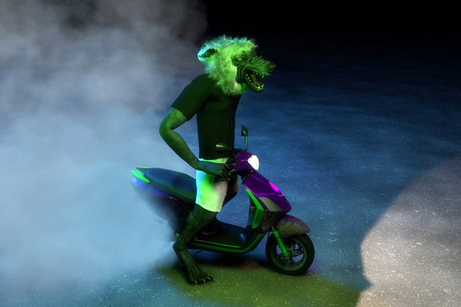
On June 21, American artist and electronic musician Three Legged Race (Robert Beatty) closes out Lampo's spring 2014 season with a performance and screening of new and recent work, as well as sound and video collaborations with artist Takeshi Murata, including the Chicago premiere of OM Rider and a new video piece commissioned by Lampo.
Robert Beatty is an artist and electronic musician who performs solo under the name Three Legged Race. He is a long-running member of the bands Hair Police, Eyes and Arms of Smoke, and C. Spencer Yeh's Burning Star Core. Through Beatty's collaboration with video artist Takeshi Murata, Three Legged Race has performed at the Ullens Center for Contemporary Art, Beijing, China; Deitch Projects, New York; the Mattress Factory, Pittsburgh; and the New Museum, New York. In 2013, Beatty released the acclaimed "Soundtracks for Takeshi Murata" (Glistening Examples), a collection of his audio work for Murata. Beatty's performances and recordings explore the repetition and decay of simple musical themes, evoking minimalist sci-fi soundtracks, clouded hypnotic landscapes, and primal industrial techno. He lives in Lexington, Kentucky.
This performance is presented in partnership with Lampo. Founded in 1997, Lampo is a non-profit organization for experimental music, sound art, and intermedia projects. Visit www.lampo.org.
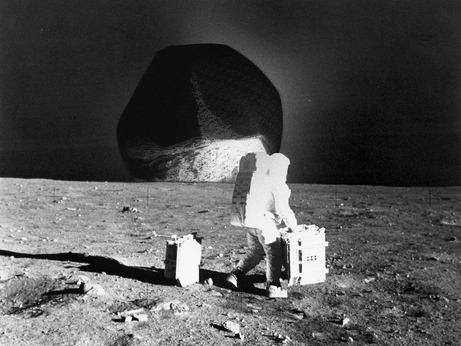
In conjunction with the Graham Foundation’s current exhibition, “Everything Loose Will Land,” curated by Sylvia Lavin, LA-based architect and designer Jason Payne will explore hybridity, chance, and “looseness,” and discuss how these concepts have informed his own experimental design work.
Jason Payne is associate professor of architecture at University of California Los Angeles and Principal of Hirsuta. He received his BArch from Southern California Institute of Architecture and his MS in Advanced Architectural Design from Columbia University. Prior to founding Hirsuta in 2008 he worked as project designer for Reiser + Umemoto/RUR Architects and Daniel Libeskind Studio and partnered on the award-winning office Gnuform. He has held teaching positions at Southern California Institute of Architecture, The Ohio State University, Rice University, Pratt Institute, Rensselaer Polytechnic Institute, and Bennington College.
Image: Hirsuta (Jason Payne and Tim Callan), On The Turning Away, from Planetesimal Series II.
For more information on the exhibition, Everything Loose Will Land, click here.
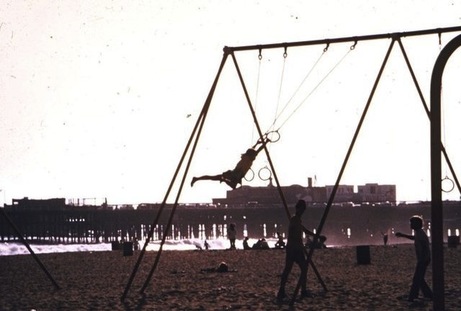
The images of Los Angeles by Britain’s Archigram group are a little perplexing. Are they depicting the Los Angeles of the 1960s, or a projected Los Angeles? On July 21, architectural and urban historian Simon Sadler delves into Archigram’s Los Angeles, a city that became the new locus of the urban imaginary in the vanguard circuits of 1960s London. Sadler considers how Archigram’s projections of a future Los Angeles were perhaps nostalgic for California’s recent past, while serving London’s larger fantasy of spontaneous, populist, self-organized urbanism.
Simon Sadler is professor of architectural and urban history at the University of California, Davis. His publications include Archigram: Architecture without Architecture (MIT Press, 2005); Non-Plan: Essays on Freedom, Participation and Change in Modern Architecture and Urbanism (Architectural Press, 2000, coeditor Jonathan Hughes); and The Situationist City (MIT Press, 1998). He currently coordinates the California section of the Society of Architectural Historians’ Archipedia project.
Image: Warren Chalk (Archigram), Santa Monica Beach, teaching slide, c. 1968.
For more information on the exhibition, Everything Loose Will Land, click here.

Courtesy of the Lawrence Halprin Collection, the Architectural Archives, University of Pennsylvania.
Please joins us to celebrate the opening of our fall exhibition.
For more information on the exhibition, Experiments in Environment: The Halprin Workshops, 1966-1971, click here.
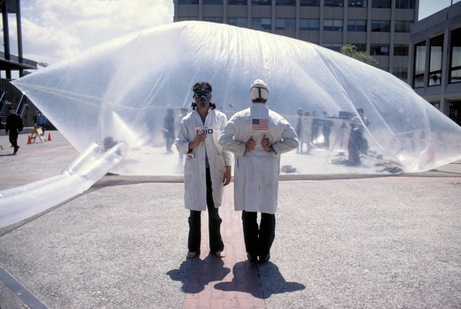
Chip Lord, cofounder of the experimental architecture collective Ant Farm, will reflect on his participation in one of the Halprins’ early collaborative workshops and the influence that this experience had on his later work.
Chip Lord was trained as an architect and was a founding member of the experimental art and architecture collective Ant Farm (1968-1978). Dedicated to finding alternatives to mainstream architectural practice, Ant Farm worked at the fringe of architecture, producing inflatable structures, organizing performances and media events, and exploring nomadic design. Ant Farm achieved widespread notoriety in the 1970s for such projects as House of the Century (1972), a ferro-cement weekend House in Texas, which won a Progressive Architecture Design Citation in 1971, and Cadillac Ranch (1974), an iconic work that is both public art and entropic sculpture and crosses disciplinary boundaries. Ant Farm also produced the video art classics Media Burn and The Eternal Frame, both in 1975. Following his involvement with Ant Farm, Lord continued to work in video and produced single channel tapes and installations, often collaborating with other artists. Lord has taught at the University of California, San Diego and the University of California, Santa Cruz, where he is Professor Emeritus in Film & Digital Media.
Image: The Clean Air Pod by Ant Farm at U.C. Berkeley on the first Earth Day, 1970. Courtesy Chip Lord.
For more information on the exhibition, Experiments in Environment: The Halprin Workshops, 1966-1971, click here.
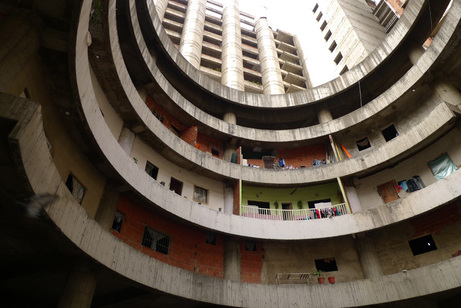
On Monday, October 6, writer and curator Justin McGuirk will discuss his new Graham-funded book, Radical Cities: Across Latin America in Search of a New Architecture. In this newly published title from Verso, McGuirk examines social and activist architecture in cities across Latin America.
Edwin Heathcote writes in the Financial Times: "In his fine and timely book Radical Cities, [McGuirk] takes a road trip to seek out not only the problems caused by rapid growth but also the most radical and influential ideas to have emerged in response over the past couple of decades...an intriguing picture of an activist urbanism and architecture that has made a real difference."
Justin McGuirk is a writer, critic, and curator based in London. He is the director of Strelka Press, the publishing arm of the Strelka Institute in Moscow. He has been the design critic of The Guardian, the editor of Icon magazine, and the design consultant to Domus. In 2012 he was awarded the Golden Lion at the Venice Biennale of Architecture for an exhibition he curated with Urban Think Tank. His book, Radical Cities: Across Latin America in Search of a New Architecture was published by Verso in spring 2014.
Image: Anonymous, "A view of the squatted Torre Confinanzas, Caracas, Venezuela." Photo: Justin McGuirk.
Related Grant: Justin McGuirk, Radical Cities: Across Latin America in Search of a New Architecture (Verso, 2014).
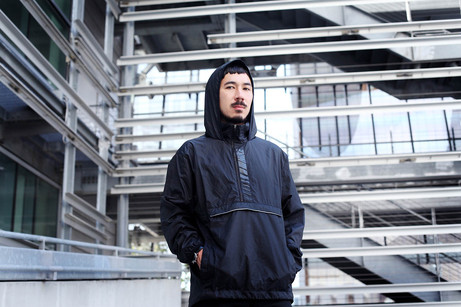
The Graham Foundation is pleased to continue its ongoing partnership with Lampo this fall with the premiere of Rene Hell’s “Bifurcating a Resounding No!” on Saturday, October 11. This latest project from Rene Hell draws from years of recorded sounds (acoustic instruments, field recordings, and voice) that the artist collected in cities across the U.S. and then shaped using various digital techniques.
Jeff Witscher a.k.a. Rene Hell (b. 1983, Long Beach, Calif.) is a visual artist, avid chess player, and music obsessive who has explored a variety of underground styles since his teens. His aesthetic choices, expressed over dozens of recordings released under many pseudonyms, have anticipated the shifts in U.S. experimental music spanning the last decade. Most recently, he received acclaim for synth albums Porcelain Opera and The Terminal Symphony (Type), a 2012 split release with Oneohtrix Point Never, and his newest recording, Vanilla Call Option (PAN). Witscher’s practice is peripatetic—roving styles, changing monikers and wide-ranging influences. Travel is central to Vanilla Call Option, with its digital palette constructed on the move between airports, performance spaces, and public libraries, to evoke the musique concrète of Bernard Parmegiani and the computer music of Charles Dodge. Witscher lives in Los Angeles.
This performance is presented in partnership with Lampo. Founded in 1997, Lampo is a non-profit organization for experimental music, sound art, and intermedia projects. Visit www.lampo.org.
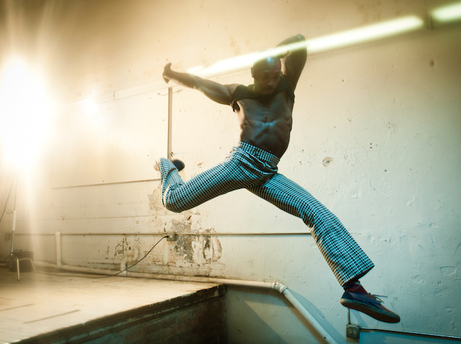
Now in their thirteenth season, The Seldoms create bold, thought-provoking dance that is driven by inquiry into contemporary issues, the history of art and ideas, and reflection on individual experiences. Known for their collaborations with visual artists, architects, composers, and fashion designers, the Chicago-based dance company has designed multi-disciplinary, site-specific performances in a variety of unconventional settings.
On November 5, The Seldoms will perform segments from their newest undertaking, RockCitizen—an inquiry into counterculture, rock music, and citizenship. In addition to the performance, The Seldoms' artistic director Carrie Hanson will lead a discussion about the multi-disciplinary, creative process behind the company's work.
The Seldoms are alchemists of artistic media who believe that movement—along with image, sound, text, and location—can expand action and environment into larger restless visions. Since 2001, the company has performed widely in Chicago, notably at the MCA, the Harris Theater for Music and Dance, and at The Dance Center of Columbia College Chicago; at national venues including Joyce SoHo in New York; and internationally in Russia, Canada and Taiwan. The group has received numerous grants and awards, including a 2014 National Performance Network Creation Fund and a National Dance Project Production Grant.
Carrie Hanson, artistic director of The Seldoms, is a dance artist and educator. Since founding The Seldoms in 2001, she has made over twenty-five original works for the company. Interested in unconventional performance settings, she has placed dance in a cargo container, an Olympic-sized outdoor pool, and an architectural salvage store. She was a 2005 Chicago Dancemaker’s Forum Lab Artist, has twice been awarded an Illinois Arts Council Choreographic Fellowship, and received a Ruth Page Award for Performance. In 2012, Hanson was named one of “25 to Watch” by Dance Magazine.
Image: Photo Brian Kuhlmann
The Seldoms
http://theseldoms.org
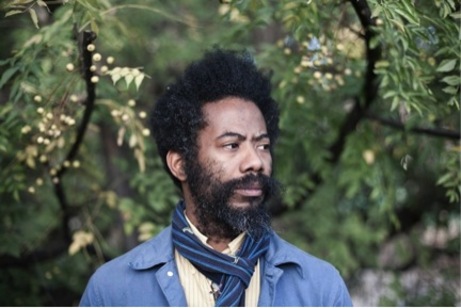
On November 8, Brooklyn-based artist and composer Robert A.A. Lowe will perform a new improvisation with voice, using a modular synthesizer amplified in quad sound.
Robert Aiki Aubrey Lowe (b. 1975, Kansas City, MO) is an artist and composer who works with voice in the realm of spontaneous music, often under the moniker of Lichens. Interested in the physicality of sound, Lowe creates patch pieces using modular synthesizers and tonal vocalizations, both in live performance and recording. His music relies on the sensitivity of analogue modular systems to echo the organic nature of vocal expression in order to create a trance-like state and usher in a deeper listening through sound and feeling. Lowe has collaborated with Ben Russell, Ben Rivers, Sabrina Ratté, Rose Lazar, Nicolas Becker, Tarek Atoui, Evan Calder Williams, Ariel Kalma, Lucky Dragons, Doug Aitken, Hisham Akira Bharoocha, Patrick Smith, Monica Baptista, Kevin Martin, Chris Johanson, Tyondai Braxton, David Scott Stone and Rose Kallal, among others. Select performances include Doug Aitken's "Migration" happening at 303 Gallery (2008) and Princeton University (2010); "La Suite" for Serpentine Gallery (2012); "In the Wan Light of Napalm and Moon," a collaboration with Evan Calder Williams (2012); "Peradam" with Sabrina Ratté at EMPAC (2014); and Cinema du Réel at the Centre Georges Pompidou (2014).
This performance is presented in partnership with Lampo. Founded in 1997, Lampo is a non-profit organization for experimental music, sound art, and intermedia projects. Visit www.lampo.org.
Please note: Event entry is on a first-come, first-serve basis. Tickets do not guarantee entry, so please plan to arrive early. Doors will open at 7:30PM.
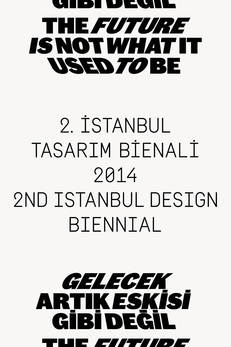
Under the overarching title, The Future is Not What it Used to Be, the 2nd Istanbul Design Biennial explores the potential of the design manifesto to envision and interrogate the future, now. In our contemporary context of rapid social and political change, how might design manifestos address larger issues while remaining grounded in everyday life? Could the manifesto move beyond its Western origins and incorporate ideas from across cultures? Are new forms of media generating new forms of manifestos? Zoë Ryan, John H. Bryan Chair and Curator of Architecture and Design at the Art Institute of Chicago, and curator of the 2nd Istanbul Design Biennial, will discuss its making, which is on view through December 14, 2014.
Zoë Ryan is a curator and writer. She is the John H. Bryan Chair and Curator of Architecture and Design at the Art Institute of Chicago where she is building the museum’s first collection of contemporary design and expanding its architecture collection. Her recent exhibitions include Building: Inside Studio Gang Architects (2012); Fashioning the Object: Bless, Boudicca, and Sandra Backlund (2012); Bertrand Goldberg: Architecture of Invention (2011); and Hyperlinks: Architecture and Design (2010). Prior to working at the museum, Ryan was Senior Curator at the Van Alen Institute in New York. Ryan has authored and edited numerous publications, including, Building with Water: Designs, Concepts, Visions (Birkhauser Press, 2010). Ryan is often called upon as a juror and critic and has lectured on her work internationally. She has served on the advisory committee of the Experimenta Design Biennial in Lisbon, and has been a juror for the National Design Awards, Cooper Hewitt National Design Museum and the Wheelwright Fellowship, Graduate School of Design, Harvard University. Ryan is an Adjunct Associate Professor in the School of Design at the University of Illinois at Chicago and is a lecturer in the Art History Department of the School of the Art Institute.
This talk is presented in partnership with the Architecture & Design Society of the Art Institute of Chicago.
![]()
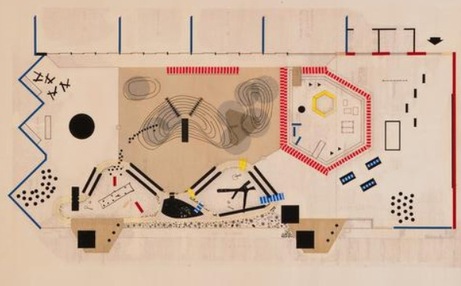
On November 19, Graham Foundation grantee Susan Herrington will discuss her new book, Cornelia Hahn Oberlander: Making the Modern Landscape—the first biography of Canadian landscape architect Cornelia Hahn Oberlander, one of the most influential landscape architects of the twentieth century. We are also pleased to welcome Cornelia Hahn Oberlander, who will be joining Herrington for the presentation of the new book.
Cornelia Hahn Oberlander is a landscape architect who has been a pioneer in the fields of sustainability and ecologically-sensitive planning for more than sixty years. Born in 1921, Oberlander fled Nazi Germany at the age of eighteen with her family, and went on to become one of the few women to graduate from Harvard University’s Graduate School of Design in the late 1940s, where she briefly overlapped with American landscape architect Lawrence Halprin. She spent her early years working with modern architects such as Louis Kahn and Dan Kiley, and has continued to collaborate with preeminent architects across Canada and the United States. Her landscape projects include the Robson Square Provincial Government complex and Courthouse in Vancouver (Architect: Arthur Erickson, 1974-1983); the Children's Creative Center for Expo '67 in Montreal, 1967; the Museum of Anthropology at the University of British Columbia (Architect: Arthur Erickson, 1976); and the Vancouver Public Library (Architects: Moshe Safdie Architects, 1995), among others. She is the recipient of many honors and awards, including the International Federation of Landscape Architects Sir Geoffrey Jellicoe Award (2011) and the American Society of Landscape Architects Medal (2012).
Susan Herrington’s research concerns the history and theory of designed landscapes. She is the author of On Landscapes (Routledge, 2009) and Schoolyard Park: 13-Acres International Design Competition (University of British Columbia Centre for Landscape Research, 2002), and has published articles in Architecture and Ideas, Footprint, Landscape Journal, and Landscape Research, as well as numerous chapters in books. She was awarded a Graham Foundation grant for her recent book, Cornelia Hahn Oberlander: Making the Modern Landscape (University of Virginia Press, 2014). Currently, she is writing Landscape Theory in Design to be published by Routledge, and is conducting research on the architect Oskar Stonorov and Walter Reuther, former president of the United Auto Workers Union. Herrington is professor of landscape architecture and architecture at the University of British Columbia in Vancouver, Canada.
Related Grant: Susan Herrington, Cornelia Hahn Oberlander: Making the Modern Landscape (University of Virginia Press, 2014).
Image: Expo '67, An Environment for Creative Play and Learning. Courtesy of Canadian Centre for Architecture, Cornelia Hahn Oberlander Archives.
For more information on the exhibition, Experiments in Environment: The Halprin Workshops, 1966-1971, click here.

Los Angeles-based collaborative Lucky Dragons will premiere "RSVP Partita," a performance created for the Graham Foundation and Lampo that treats Lawrence and Anna Halprin's RSVP Cycles and their workshop-based approach to the creative processes, developed in the late 1960’s, as a musical form. Presented in conjunction with the Graham’s current exhibition, Experiments in Environment: The Halprin Workshops, 1966-1971, this new work interweaves score, performance, and evaluation to create an iterative suite for instrumentalists, software, and group conversation.
Lucky Dragons is a collaboration between artists Sarah Rara (b. 1983, Livingston, NJ) and Luke Fischbeck (b. 1978, San Francisco, CA), who have been exploring the nuances of sound as a participatory medium for nearly fourteen years through recordings, performance, software design, workshops, and installations. Their work has been presented in a wide variety of contexts, including the Whitney Museum of American Art (as part of the 2008 Whitney Biennial), the Centre Georges Pompidou, the Walker Art Center, London's Institute for Contemporary Art, MOMA/PS1 and the Kitchen in New York, REDCAT, LACMA, MOCA, and the Hammer Museum in Los Angeles, the 54th Venice Biennale, and the Smithsonian's Hirshhorn Museum and Sculpture Garden, among others. The name "Lucky Dragons" is borrowed from a fishing vessel caught in the fallout from H-bomb tests in the mid-1950s; this incident sparked international outcry, spontaneously generating the worldwide anti-nuclear movement.
This performance is presented in partnership with Lampo. Founded in 1997, Lampo is a non-profit organization for experimental music, sound art, and intermedia projects. Visit www.lampo.org.
Please note: RSVP is required. Event entry is on a first-come, first-serve basis, and seating is limited, so please plan to arrive early. Doors open at 7:30PM.
For more information on the exhibition, Experiments in Environment: The Halprin Workshops, 1966-1971, click here.

The Sea Ranch is a residential development that stretches ten miles along the Northern California Coast. Beginning in 1963, the American landscape architect Lawrence Halprin led a diverse, cross-disciplinary team of professionals, which included architects Joseph Esherick & Associates and MLTW (Moore Lyndon Turnbull Whitaker), in planning the early development of The Sea Ranch. Their work, acclaimed as early ecological planning and architecture, was published and emulated internationally.
Embodying the ideals of the team, the early work at The Sea Ranch was guided by group meetings, workshops, and a “Locational Score” drawn by Lawrence Halprin. As the project developed, incrementally and with a changing cast of authors, the qualities varied, but Halprin’s Score remains a point of reference. Subsequent workshops led by Halprin and more recent ones conducted by the Commons Landscape Committee have continually added to the understanding of the place and the need for tending a dynamic landscape.
On December 2, Donlyn Lyndon, FAIA, one of the founders of MLTW will discuss the nature of The Sea Ranch and the architecture that has developed there. His talk will draw in part from his acclaimed book The Sea Ranch: 50 Years of Landscape, Architecture, Place and Community on the Northern California Coast (with Jim Alinder, Princeton Architectural Press, 2014) and a recent Architectural Forum panel that Lyndon helped organize and chair for The Sea Ranch 50th Birthday Celebration.
Donlyn Lyndon, FAIA, is the Eva Li Professor Emeritus of Architecture and Urban Design at University of California, Berkeley, and previously headed the Departments of Architecture at MIT and the University of Oregon. In 1997, he received the AIA/ACSA Topaz Award for Excellence in Education. The Sea Ranch Condominium One, which he and his partners in MLTW (Moore Lyndon Turnbull Whitaker) designed, won the distinguished AIA 25 Year Award and is listed on the National Register of Historic Places. Lyndon remains active in practice and has also authored or coauthored numerous publications, including The Place of Houses (University of California Press, 2000); The City Observed: Boston (Vintage, 1982); Chambers for a Memory Palace (The MIT Press, 1996); and most recently, The Sea Ranch: 50 Years of Architecture, Landscape, Place and Community on the Northern California Coast (with photographs by Jim Alinder, Princeton Architectural Press, 2014).
Image: Anna Halprin conducting a "Score for Building Community" at The Sea Ranch, Sept 1, 2014. Photograph by Jim Alinder.
For more information on the exhibition, Experiments in Environment: The Halprin Workshops, 1966-1971, click here.
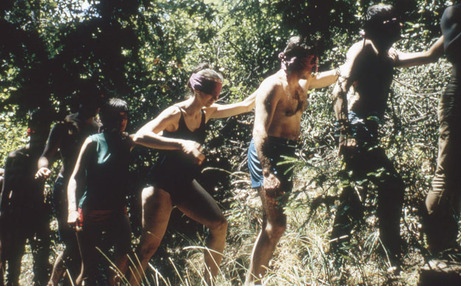
In conjunction with the exhibition Experiments in Environment: The Halprin Workshops, 1966-1971, the Graham Foundation is pleased to present the Chicago launch of the Graham-funded book City Choreographer: Lawrence Halprin in Urban Renewal America by landscape architectural designer and urban historian Alison Hirsch. Hirsch will be joined by fellow grantee, architectural historian Eva J. Friedberg to discuss the influences, development, and impact of Anna and Lawrence Halprins’ collaborative workshops.
Friedberg will trace the origins of the Halprins’ partnership, highlighting the parallels between architecture and dance, and the culmination of the couple’s collaborative practice within the setting of the "Experiments in Environment" workshops. Then, Hirsch will then discuss the impact of these workshops on Anna and Lawrence’s subsequent work in the urban context of the late 1960s and 1970s, emphasizing the development and application of Lawrence Halprin's "Take Part" workshop process.
Copies of City Choreographer: Lawrence Halprin in Urban Renewal America (University of Minnesota Press, 2014) are available for purchase in the Graham Foundation Bookshop.
Eva J. Friedberg is a modern art and architecture historian on adjunct faculty at the University of San Diego and Woodbury University School of Architecture. Her essay on the Experiments in Environment workshops, “Collective Movement: Anna and Lawrence Halprin’s Joint Workshops,” appears in the 2012 anthology West of Center: Art and the Counterculture Experiment in America, 1965-1977, published by the University of Minnesota Press. Friedberg’s doctoral dissertation on the early work of Lawrence Halprin closely examines the designer’s development of the RSVP Cycles as a new method for organizing human creative processes and as a guide to collective creativity.
Alison Hirsch is a landscape architectural designer as well as urban historian and theorist. She is Assistant Professor of Landscape Architecture at the University of Southern California and co-founder and partner of Foreground design agency. Her book City Choreographer: Lawrence Halprin in Urban Renewal America was released by University of Minnesota Press in April 2014. The book provides an analysis of the creative process Lawrence Halprin developed with his wife, dancer and choreographer Anna Halprin, and how aspects of this process have the potential to enrich contemporary approaches to structuring the city.
Related Grants: Alison Hirsch, City Choreographer: Lawrence Halprin in Urban Renewal America (University of Minnesota Press, 2014); and Eva Jessica Friedberg, "Action Architecture: Lawrence Halprin's Experiments in Landscape Design, Urbanism, and the Creative Process."
Image: Photographer unknown, participants in “Experiments in Environment," a creativity workshop that served as an experimental precursor to Lawrence Halprin & Associates’ Take Part Process, a community participation methodology, 1966, Kentfield, CA. Courtesy of the Lawrence Halprin Collection, the Architectural Archives, University of Pennsylvania.
For more information on the exhibition, Experiments in Environment: The Halprin Workshops, 1966-1971, click here.
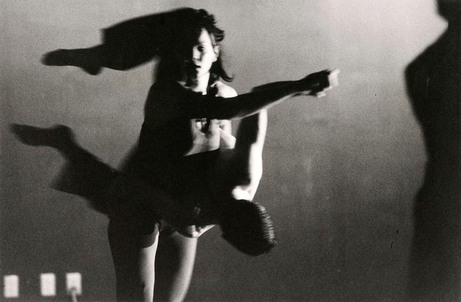
Former dancer and choreographer Ginger Farley and architect Julie Hacker FAIA will run a one-day workshop to explore the intersection between dance and architecture. A small group of dancers and architects will be invited to participate with the goal of extending the dialogue between the two disciplines.
Ginger Farley has been a dancer, dancemaker, teacher, and advocate for live art since 1978. An early member of Hubbard Street Dance Chicago, she later directed her own company, The 58 Group, with colleague Cameron Pfiffner. Farley now leads the Chicago Dancemakers Forum, practices dramaturgy, and mentors emerging artists. She is a member of the Performance Programs Committee at the MCA, the advisory committee for the School of Theater and Music at UIC, space and programming committees at Links Hall, the advisory board for Arts in Sacred Places, and serves on the Board of Directors at Arts Alliance Illinois.
Julie Hacker is a practicing architect and a Fellow of the American Institute of Architecture. She is a graduate of Wesleyan University, where she majored in psychology and minored in dance, with a strong interest in choreography, which she pursued in New York after college. She returned to Chicago and received her Masters in Architecture at the University of Illinois Chicago, where she was the recipient of the Chicago Women in Architecture Award. She has been a practicing architect for the last 28 years. Her firm Stuart Cohen & Julie Hacker Architects specializes in residential work and has been published nationally and internationally. The work of her practice is the subject of a recent book, Transforming the Traditional, published in 2009.
Please Note: This is a closed event. If you are interested in participating in future workshops, please contact us at [email protected].
Image: Kari Job and Jay Franke in a performance by the 58 Group at HotHouse, 2000. Photo: Brian Hill.
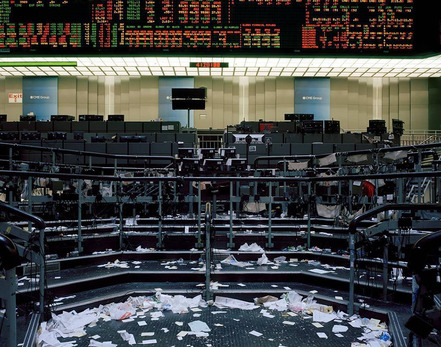
What made Chicago a center of speculative culture—a culture which so rapidly emerged as the “non-place” where cybernetic logic bears it strangest and perhaps most powerful fruits?
On December 10, artists Beate Geissler and Oliver Sann, art critic Brian Holmes, and curator Karen Irvine will discuss their new Graham-funded book Volatile Smile, which investigates the impact of technology on systems of global commerce. An elucidating collage of text and images, Geissler and Sann’s latest project provides fundamental and unprecedented insights into the mutual impact of real and cybernetic architecture, with Chicago as its archetype. Published by Moderne Kunst Nurnberg, Volatile Smile includes images, otherwise unseen, from the operating centers of Chicago's financial industry and features essays by Brian Holmes, sociologist Karin Knorr Cetina, and eco-sociologist Dirk Baecker.
Following the event, please join us for a holiday reception in the Graham Foundation’s galleries and bookshop, which will be offering a special discounts of up to 40% off. Copies of Volatile Smile will be available for purchase at the Graham's Bookshop.
Beate Geissler and Oliver Sann were born in Germany and live and work in Chicago. Geissler received an MFA from the Hochschule für Gestaltung in Karlsruhe, while Sann received his MFA from the Academy of Media Arts in Cologne. Their work has been exhibited nationally and internationally in museums, galleries, and alternative spaces, including the Renaissance Society at the University of Chicago; the Museum of Contemporary Photography, Chicago; the Fotomuseum Antwerp; the NGBK (New Society for Visual Arts) in Berlin; the National Taiwan Museum of Fine Arts; the Fotomuseum Winthertur in Switzerland; and the Museum Ludwig in Cologne. They have received numerous grants and awards, including the Videonale Award from the Museum of Art, Bonn, Germany; the Herman-Claasen-Award (Cologne, Germany); and the Dean's Research Prize, from the School of Art and Design, University of Illinois at Chicago. They have published two monographs Return to Veste Rosenberg (2006) and Personal Kill (2010). Currently, Geissler is associate professor of art at the University of Illinois at Chicago and Sann is assistant professor at the School of the Art Institute of Chicago.
Brian Holmes is an art critic, activist and translator, living in Chicago. He is interested primarily in the intersections of artistic and political practice. He holds a doctorate in Romance Languages and Literatures from the University of California at Berkeley. Brian Homes was the English editor of publications for Documenta X, Kassel, Germany since 1997. Brian was a member of the graphic arts group 'Ne pas plier' from 1999 to 2001, and has recently worked with the French conceptual art group 'Bureau d'Études'. He is currently professor of philosophy at the European Graduate School in Saas-Fee, Switzerland.
Karen Irvine is Curator and Associate Director of the Museum of Contemporary Photography at Columbia College Chicago. She has organized over forty exhibitions of contemporary photography, at the MoCP and other venues including the Hyde Park Art Center; Rockford Art Museum; Lishui International Photography Festival, China; Daegu Photography Biennale, South Korea, and the New York Photo Festival.
Image: Beate Geissler and Oliver Sann, Chicago Board of Trade, a, 2013. Courtesy of the artists.
Related Grant: Beate Geissler and Oliver Sann, Volatile Smile (Verlag für moderne Kunst, 2013).
Unless otherwise noted,
all events take place at:
Madlener House4 West Burton Place, Chicago
The Graham Foundation galleries are currently closed to the public.
The bookshop is open by appointment only:
Wed–Fri, 12–5 p.m.
To make an appointment, email: [email protected]
CONTACT
312.787.4071
[email protected]
Accessibility
Events are held in the ballroom on the third floor which is only accessible by stairs.The first floor of the Madlener House is accessible via an outdoor lift. Please call 312.787.4071 to make arrangements.
Copyright © 2008–2025 Graham Foundation. All rights reserved.